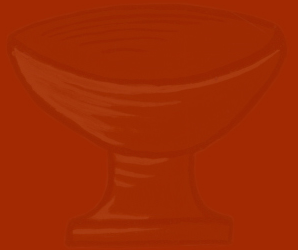
Icon of The Mother of God of Vladimir (Theotokos of Vladimir)
About this icon
This image is head and shoulders of a larger half figure prototype, said to be written by the hand of the Holy Evangelist Luke.
The histories of Moscow and of the icon of Vladimir Mother of God are eternally inseparable. It is believed that the Mother of God saved the capital city from enemies through the grace of her holy icon many times.
Words cannot describe this icon; any verbal expression would be hollow compared to the gaze of the Theotokos from her image. This look contains everything - life and death; resurrection, eternity, immortality.
According to ancient tradition, the Holy Evangelist, Physician, and Iconographer Luke painted three icons of the Theotokos of which one is known as the Vladimir icon. When the Most Pure One looked at them, she said: "May the grace of the One Who was born of me, and my grace, be with these Holy Icons."
This icon was kept in Jerusalem until 450 AD then taken to Constantinople. In the first half of twelfth century the icon was sent as a gift to the ruler of an area near Kiev, once belonging to Equal-to-the-Apostles, Grand Duchess Olga. When the icon was later being moved again by a young prince, the Theotokos appeared to the prince with a scroll in her hand, and ordered him to leave Her image in the city of Vladimir, and to build later a monastery on the place of her appearance in honor of her Nativity. The icon remained in Vladimir and since 1160 it has been called the "Vladimir" icon.
In 1164 it was taken on a victorious campaign against Volga Bulgarians. A miracle occurred during the prayer of the Russian soldiers before a battle--a light from the icon and from the Holy Cross was said to have illuminated the entire area.
Many other miracles are attributed to this icon. In 1395, Tamerlane with his Tartar horde approached Moscow. Christians had only one hope-in God's help. The icon was carried from Vladimir to Moscow. Over the ten day procession people stood on their knees all along the road upon which the procession passed, and, stretching out their hands, begged: "O Mother of God, save the Russian Land!" Then the whole city of Moscow came out to meet the Icon. Everyone was in tears, and it was said that no person could be found who did not pray fervently with sighs and tears.
At the same time Tamerlane (the Tartar aggressor) lay sleeping in his tent and saw a vision - saintly hierarchs with golden staffs descending from a high mountain, and a radiant Lady in the air above them, surrounded by unspeakable rays of purest light. A countless multitude of Angels with fiery swords encircled Her. Tamerlane woke up in fear. All the Tartar wise men, elders and fortunetellers explained that the Woman whom he had seen in the vision was the protectress of the Orthodox, the Mother of God, and that her power is invincible. After this Tamerlane ordered his horde to retreat. Both the Tartars and the Russians were astonished by this. It was written that "Tamerlane fled, pursued by the might of Most Pure Virgin!"
The grateful Muscovites built the Sretensky Monastery on the site of the meeting of the miracle-working icon and were subsequently spared by its grace-filled protection from many other attacks on the city. Tartars were said to be repelled again and again by visions of celestial armies in shining armor protecting Moscow.




